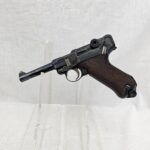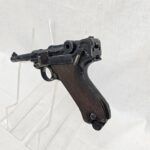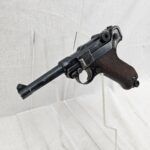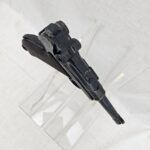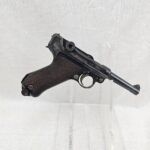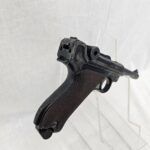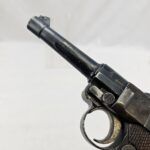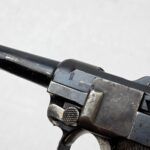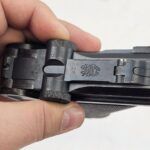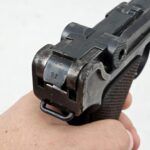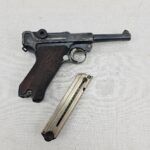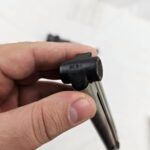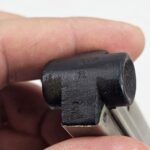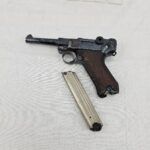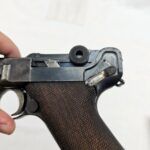~ WW1 German Imperial Luger Pistol Sn. 3691 – Deactivated EU Spec ~
The German Luger P08, commonly referred to as the Imperial Luger, is one of the most iconic firearms from World War I. Officially known as the Pistole Parabellum 1908, the Luger was adopted as the standard sidearm of the German military in 1908 and saw extensive use throughout the First World War. Its distinctive design and engineering innovations made it highly recognizable, and it remains a sought-after collector’s item today.
Sn. 3691
Development and Specifications of the Luger P08:
Origins and Design:
The Luger was designed by Georg Luger, an Austrian firearms designer who refined an earlier pistol model by Hugo Borchardt.
Luger’s improvements included a more ergonomic grip angle, refined trigger system, and a unique toggle-lock mechanism, making it both reliable and accurate for the time.
First produced by Deutsche Waffen und Munitionsfabriken (DWM) in Germany, the Luger P08 became a popular military sidearm due to its effective balance, accuracy, and craftsmanship.
Specifications:
Caliber: 9mm Parabellum (9x19mm), with some early Lugers chambered in 7.65mm.
Magazine Capacity: 8-round detachable magazine.
Barrel Length: Standard military models had a 4-inch barrel, though variations included shorter and longer barrels.
Operation: Toggle-lock, short-recoil operation, a unique feature compared to the slide action of modern semi-automatics.
Sights: Fixed front and rear sights, although the Luger’s precision engineering gave it a reputation for accuracy even at longer ranges.
Distinctive Toggle Mechanism:
One of the most unique aspects of the Luger is its toggle-lock mechanism. Instead of a conventional slide, the Luger has a toggle that pivots upward upon firing, ejecting the spent casing and loading a new round from the magazine.
This mechanism is immediately recognizable and was a notable piece of German engineering at the time, providing smooth cycling and allowing for tight manufacturing tolerances.
Role in World War I:
The Luger became a standard-issue sidearm for the Imperial German Army, with tens of thousands distributed to soldiers, particularly officers, and was known as the Pistole 08 (or P08) in military terminology.
During the war, it proved to be reliable and accurate, with many soldiers preferring it for its manageable recoil and ease of use compared to other sidearms.
Due to wartime demand, several manufacturers, including Erfurt and Simson, were contracted to produce Lugers alongside DWM, which led to minor variations in markings and finish.
Variants and Serial Numbers:
The Imperial German military produced numerous variants, including artillery and navy models with longer barrels and adjustable sights.
Serial numbers and inspector’s marks (proof marks) were stamped on all major parts, which has made it easier for collectors to verify authenticity.
Many models were stamped with the German imperial eagle or other markings indicating acceptance by military inspectors, giving insight into the production date and the factory of origin.


















